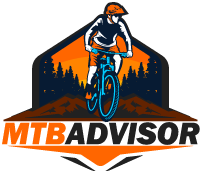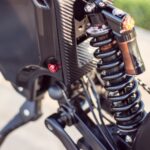Understanding Your Riding Style
Choosing the right mountain bike (MTB) is more than just picking a cool color or the latest trend. It begins with understanding your own riding style. Are you a downhill daredevil, a rugged trail explorer, or perhaps a smooth, cross-country cruiser? Different bikes cater to different styles, and knowing what fits you best can make all the difference.
From my own experience, riding has always been about the thrill and the connection to nature. I’ve found myself on various terrains, and each time, I learned more about what makes a bike just right for me. Let’s break it down together so you can make an informed choice that suits your adventurous spirit.
Types of Mountain Bikes
There are several types of mountain bikes, each designed with specific riding styles in mind. Here’s a rundown of the most common types:
- Cross-Country (XC) Bikes: These bikes are lightweight and efficient, ideal for covering long distances on varied terrain.
- Trail Bikes: A middle ground between XC and all-mountain bikes, trail bikes are versatile and great for various conditions.
- All-Mountain Bikes: Designed for more technical trails, these bikes can handle steep descents and rough terrain.
- Downhill Bikes: As the name suggests, these bikes are built for descent. They feature heavy-duty frames and suspension systems.
- Freeride Bikes: These bikes are for those who love tricks and jumps, offering a sturdy build and great suspension.
Each bike has its own unique features and characteristics that cater to different riders. So, take a moment to reflect on how you like to ride.
Key Factors to Consider
When choosing your MTB, several factors come into play. Here are the key elements you should consider:
Frame Geometry
Frame geometry is crucial because it affects how the bike handles. A bike with a slack head angle offers greater stability on descents, making it ideal for downhill riders. If you prefer climbing and tighter turns, look for a steeper head angle. My first bike had surprisingly relaxed geometry, and I kept finding myself wobbling on tighter trails. A little adjustment made a world of difference!
Suspension Type
MTBs come with two main types of suspension: hardtail and full-suspension.
- Hardtail: These bikes have suspension only in the front. They are lighter and generally offer better efficiency for climbing. However, they can be less forgiving on technical tracks.
- Full-suspension: With both front and rear suspension, these bikes are designed for tackling rough terrain. They absorb shocks better, making them great for aggressive riding.
Depending on your style, you might prefer the nimbleness of a hardtail or the comfort of a full-suspension bike. Personally, I love the cushion of a full-suspension bike when flying over rocks.
Wheel Size Matters
Wheel size can greatly affect your ride. Here are some common sizes:
- 27.5 inches (650B): This size provides a great balance of speed and maneuverability.
- 29 inches: These wheels roll over obstacles easily and maintain speed well on smooth trails, making them ideal for XC racing.
Choosing the right wheel size depends on where you ride. I found that going with a 29er helped me maintain speed on longer trails, but I often struggled on tighter, technical paths.
Brakes
Deciding between hydraulic disc brakes and mechanical disc brakes is another critical choice. Hydraulic brakes offer better stopping power and modulation, which is fantastic for steep descents. Mechanical disc brakes are easier to maintain but may not perform as well in tough conditions. I learned this the hard way on a muddy trail with mechanical brakes. Let me tell you, having good brakes can save your skin!
Gearing
The gears on your bike can significantly impact your performance. More gears allow for better adjustment on varying terrain but can be complicated to manage. Single-speed bikes are simpler but limit your options. Personally, I enjoy having a wide range of gears, especially when tackling steep climbs.
Your Budget
Let’s talk about money because we all know that quality comes at a price. Setting a budget is vital, though it shouldn’t completely restrict your options. Think about where you’ll ride the most and what features you need. It’s often better to save up for a higher-quality bike that will last longer, rather than purchasing a cheaper one that may need constant repairs.
Test Riding
Once you have a solid understanding of what you want, it’s time to test ride some bikes. Most bike shops offer demo days or rentals. I cannot stress how important this step is! You need to feel how the bike responds under your weight and riding style. Pay attention to comfort, handling, and overall feel. Don’t be shy to ask the shop employees for help; they usually have invaluable insights.
Ask the Community
Sometimes, chatting with fellow mountain bikers can provide insights that just aren’t found in a brochure. Whether it’s at local trails or online forums, community feedback can steer you in the right direction. People love sharing their experiences, and you might even find someone willing to let you try out their bike.
Online Research
While personal recommendations are essential, don’t forget to hit the internet. Sites like bike reviews, blogs, and YouTube channels can supply you with extensive information and comparisons. Some reviews even show the bikes in action, which can add a bit of color to your understanding.
Conclusion
Selecting the right mountain bike boils down to understanding your own riding style and preferences. From the type of bike that suits your terrain to the essential components like brakes, gears, and tires, each choice shapes your biking experience. Take your time with this process; the right bike will enhance your rides and open up new trails to explore.With the tips provided in this article, I hope you feel more equipped to make a sound decision. Happy riding, and may your adventures be exciting and your rides smooth!






